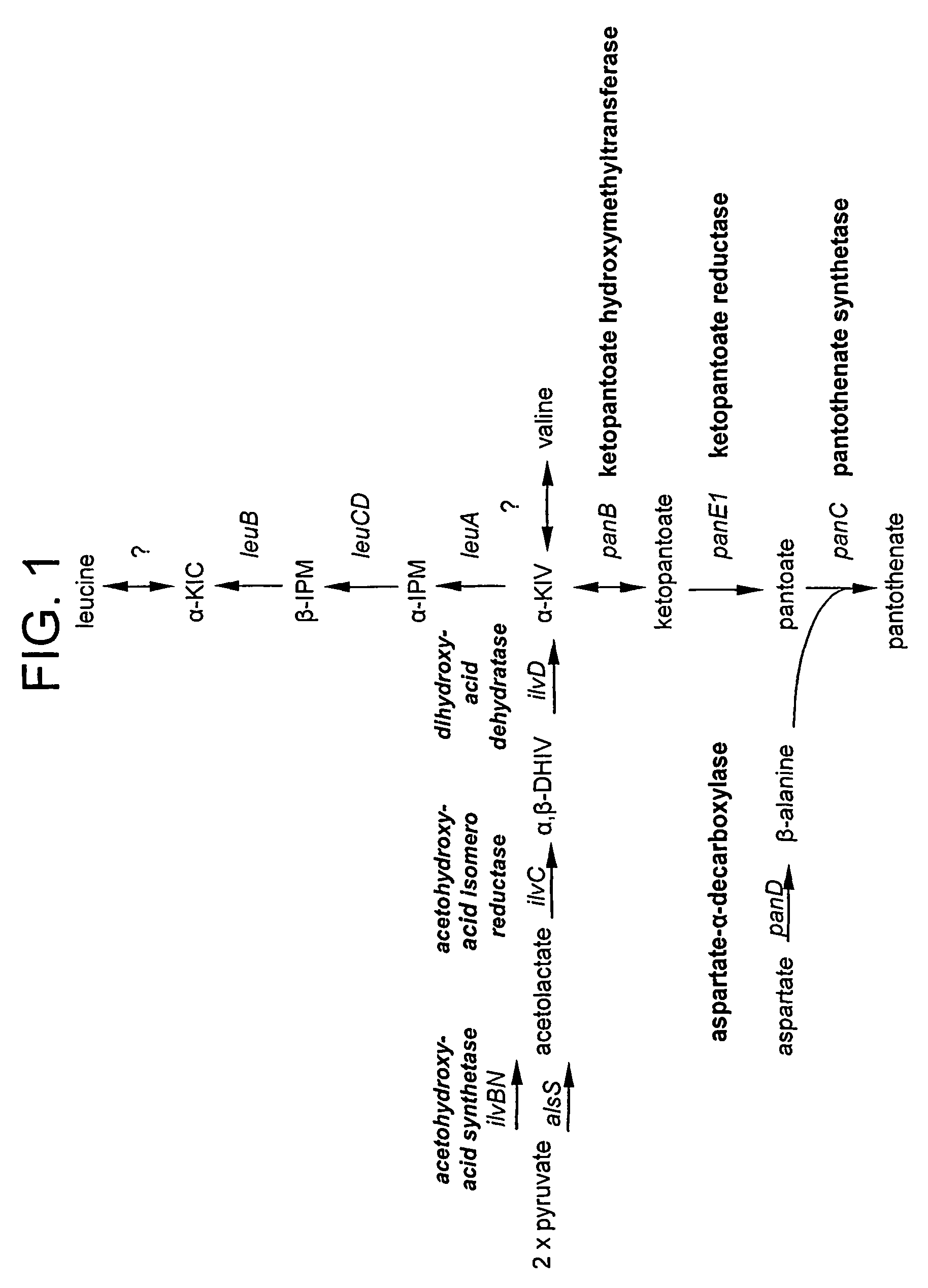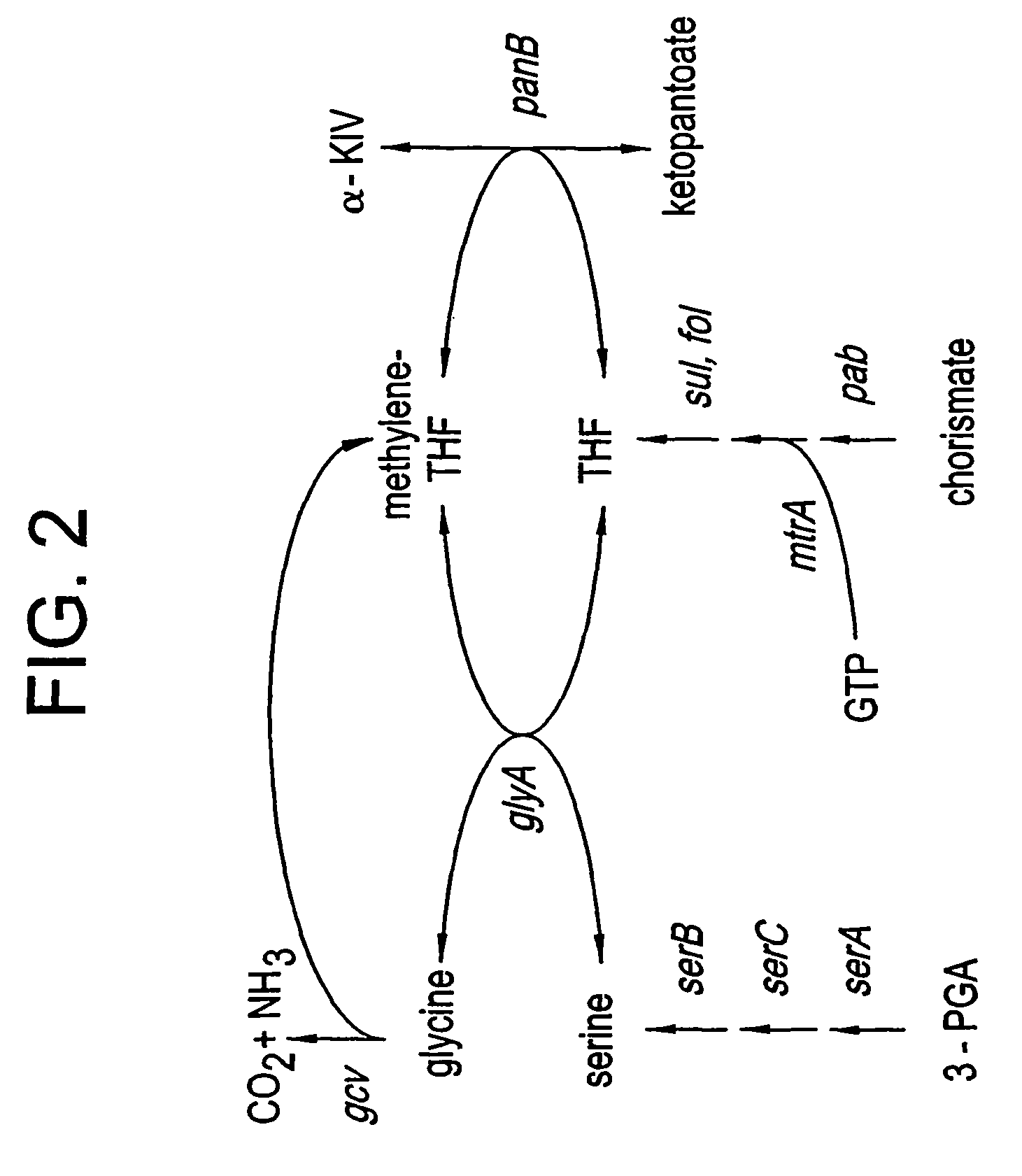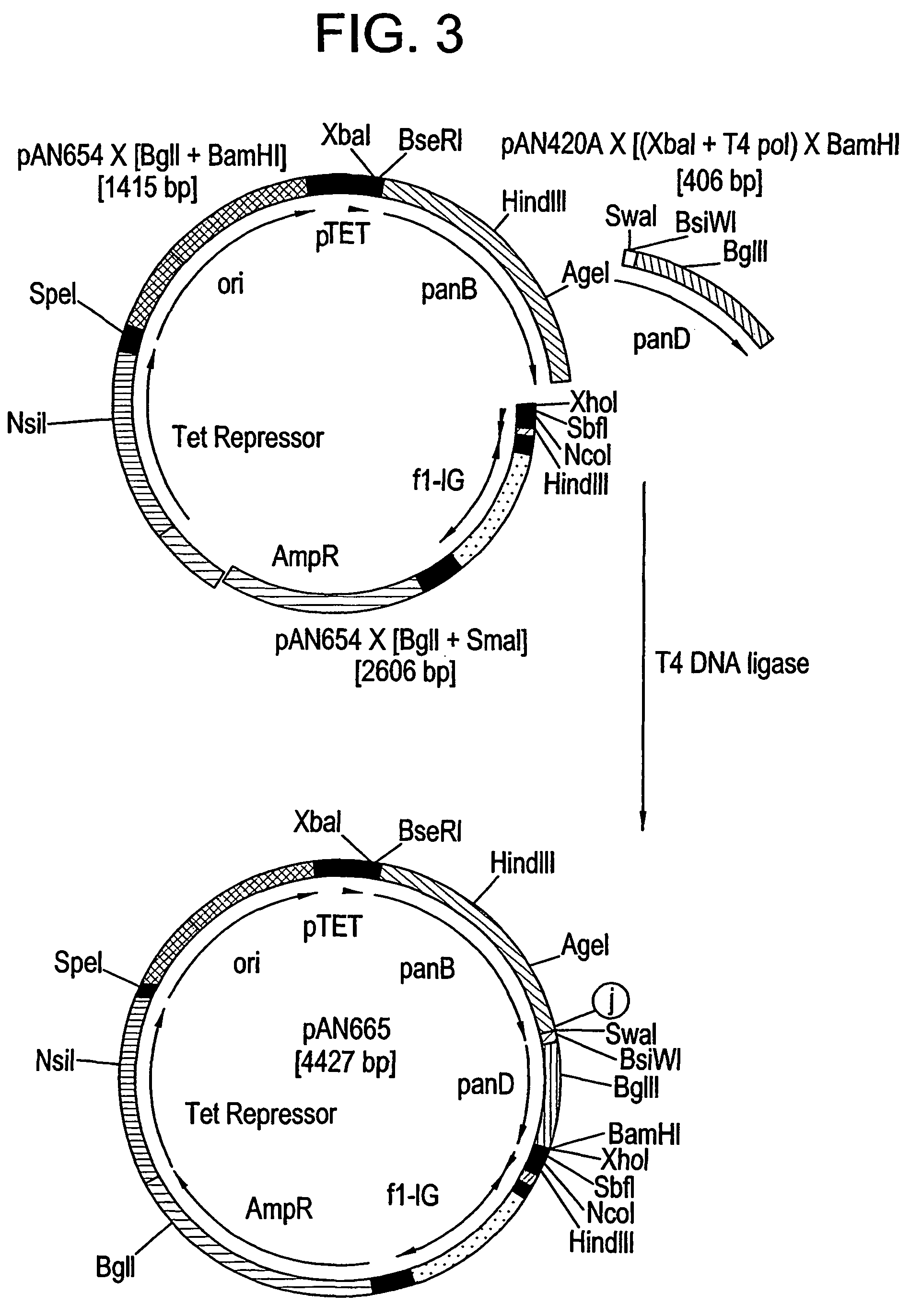Microorganisms and processes for enhanced production of pantothenate
a technology of pantothenate and microorganisms, which is applied in the direction of lysine, transferase, ligase, etc., can solve the problems of excessive substrate cost and other problems, and achieve the effects of enhancing the level of the key pantothenate biosynthetic pathway intermediate, enhancing the production of pantothenate, and increasing the level of m
- Summary
- Abstract
- Description
- Claims
- Application Information
AI Technical Summary
Benefits of technology
Problems solved by technology
Method used
Image
Examples
example i
Panto-Compound Production Strains
[0102]In developing Bacillus strains for the production of pantothenate, various genetic manipulations are made to genes and enzymes involved in the pantothenate biosynthetic pathway and the isoleucine-valine (ilv) pathway (FIG. 1) as described in U.S. patent application Ser. No. 09 / 400,494 and U.S. patent application Ser. No. 09 / 667,569. For example, strains having a deregulated panBCD operon and / or having deregulated panE1 exhibit enhanced pantothenate production (when cultured in the presence of β-alanine and α-ketoisovalerate (α-KIV)). Strains further deregulated for ilvBNC and ilvD exhibit enhanced pantothenate production in the presence of only β-alanine. Moreover, it is possible to achieve β-alanine independence by further deregulating panD.
[0103]An exemplary pantothenate production strain is PA824, a tryptophan prototroph, Spec and Tet resistant, deregulated for panBCD at the panBCD locus, deregulated for panE1 at the panE1 locus (two genes i...
example ii
Increasing Pantothenate Production by Increasing Serine Availability
[0115]At least one method for optimizing pantothenate production involves regulating the availability of serine in the microorganism cultures. In particular, it can be demonstrated that increasing the availability of serine leads to increased pantothenate production (e.g. relative to HMBPA production), whereas decreasing the availability of serine leads to decreased pantothenate production relative to HMBPA production. This method is based on the understanding that the compound, methylenetetrahydrofolate (MTF), which is derived from serine, donates a hydroxymethyl group to α-KIV during the pantothenate biosynthetic reaction to yield ketopantoate (see e.g., FIGS. 1 and 2). Thus, regulating serine levels is one means of effectively regulating ketopantoate levels and, in turn, regulating pantoate and / or pantothenate production in appropriately engineered microorganisms. To demonstrate this regulation, PA824 was grown i...
example iii
Engineering Bacterial Cells with Increased Amounts of Serine Hydroxylmethyl Transferase, the glyA Gene Product
[0118]As an alternative to feeding serine, another method of increasing serine levels and / or serine utilization levels (and accordingly, methylenetetrahydrofolate levels) in order to regulate pantothenate production levels is to increase synthesis or the activity of 3-phosphoglycerate dehydrogenase or of serine hydroxymethyl transferase (the serA and glyA gene products, respectively), thereby increasing serine and methylenetetrahydrofolate biosynthesis in appropriately engineered microorganisms.
[0119]Expression of the glyA gene was increased by transforming B. subtilis cells with an expression cassette containing the B. subtilis glyA gene cloned downstream of a strong, constitutive promoter. To construct the expression cassette the primers RY417 and RY418 depicted in Table 5 were used to amplify the glyA gene by PCR from chromosomal DNA isolated from B. subtilis PY79.
[0120]
T...
PUM
| Property | Measurement | Unit |
|---|---|---|
| temperatures | aaaaa | aaaaa |
| temperatures | aaaaa | aaaaa |
| temperatures | aaaaa | aaaaa |
Abstract
Description
Claims
Application Information
 Login to View More
Login to View More - R&D
- Intellectual Property
- Life Sciences
- Materials
- Tech Scout
- Unparalleled Data Quality
- Higher Quality Content
- 60% Fewer Hallucinations
Browse by: Latest US Patents, China's latest patents, Technical Efficacy Thesaurus, Application Domain, Technology Topic, Popular Technical Reports.
© 2025 PatSnap. All rights reserved.Legal|Privacy policy|Modern Slavery Act Transparency Statement|Sitemap|About US| Contact US: help@patsnap.com



